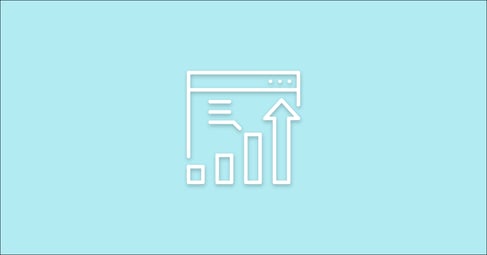Written By:
Kelsey Miller
In the world of inbound marketing it’s common practice to create a map of the buyer’s journey. For higher education marketing—or, as we like to call it, inbound enrollment—the same is true. Below, we discuss four key factors to consider when mapping the student journey, including:
- Thoughtful, data-backed student personas
- Touchpoints between the institution and prospective students throughout each stage of the journey
- Common pain points, questions, and objectives at each stage of the journey
- The impact of emerging concerns and current events of the decision-making process
To effectively organize your enrollment marketing efforts, you’ll need accurate student personas, a clear understanding of your enrollment funnel, and a thoughtful map of the student journey.
Running through these exercises will help your team develop a holistic view of your audience and a better understanding of how to effectively communicate with them to consistently deliver value and reach your enrollment goals.
4 Key Factors of Student Journey Mapping
To get started with your student journey mapping exercise, consider your student personas, key touchpoints, common pain points, questions, and objectives, and emerging concerns affecting the decision-making process.
1. Student Personas
Before you begin mapping the student journey, you must create thoughtful, data-backed student personas to guide your efforts.
Since there are many different types of students that your college or university might appeal to, it’s necessary to consider each of their journeys separately. After all, each persona is likely to interact with your organization in different ways throughout the admissions process.
Free Toolkit – Create Student Personas For Your School
For example, an adult learner who is looking to earn a graduate degree might spend more time learning about your programs directly on your website, while a first-time freshman might first interact with your institution’s social media channels. Furthermore, international students have a significantly different experience than their domestic counterparts, and require communications specific to their questions and needs throughout the process.
Your student personas and student journey maps should go hand-in-hand to paint a holistic picture of who your ideal students are and how you can deliver a valuable experience to them throughout every stage of the enrollment funnel.
2. Touchpoints
Once you’ve developed the persona for which you’d like to map the student journey, identify each of the touchpoints between that student and your institution throughout each stage of the process.
These touchpoints will include any interaction that a prospective student has with your school. This includes, but is not limited to:
- Visiting your website
- Downloading your content offers
- Signing up for your newsletter
- Attending college fairs where you have a presence
- Interacting with your social media accounts
- Viewing your paid search or social ads
- Receiving email communications
- Speaking with an admissions counselor
- Scheduling a campus visit
- Attending information sessions
- Submitting an application
- And more
As you visualize a prospective student’s progression from one touchpoint to another, look for gaps or opportunities to improve your communications to better serve their needs and nurture the relationship.
3. Common Pain Points, Questions, and Objectives
To better understand the effectiveness of your communications and identify improvements, consider the common pain points, questions, and objectives that the prospective student is likely to have at each touchpoint throughout the journey.
Your communications with prospective students should be focused on establishing trust and nurturing relationships so that they are more likely to submit an application and ultimately enroll at your institution. To do so effectively, you’ll need to address the challenges that they are facing and answer their questions along the way.
For instance, if a major touchpoint between your school and a prospective student is a visit to your website, place yourself in their shoes.
- What challenges are they facing that might prevent them from taking action?
- What are they trying to achieve by visiting a specific page?
- What questions are they likely to have when visiting this page?
Next, consider how your communications address each of the above questions. Does the web page help them achieve an objective? Is there content on the page that answers their top questions or eases barriers to further action?
Another example of a major touchpoint is email. Consider how a prospective student might respond to an email from your school.
- Did they take an action that triggered this email? In other words, do they know why they are receiving it?
- How does this message deliver value, answer a question, or otherwise foster a relationship?
Taking inventory of your touchpoints in the context of the prospective students’ pain points, questions, and objections will help you understand where you’re successfully providing value throughout the journey, and where there is room for improvement.
4. Emerging Concerns and Current Events
2020 has been a challenging year for the education sector, and it is likely to have lasting effects on the student decision making process.
In a matter of days, many colleges and universities made the shift to fully online instruction in an effort to protect the school community and limit the spread of COVID-19. As the situation continues to develop, it is still unclear whether or not on-ground instruction will resume in the fall or if permanent adjustments will need to be made.
In light of these challenges, current and incoming students are making important decisions regarding their educational journeys. A recent study by Mckinsey & Company found that roughly 8 percent of high school seniors are no longer planning to enroll in a full-time bachelor’s degree program in the fall. However, this is counteracted by a similar percentage of students who are now choosing to enroll after having previously planned to attend a part-time or two-year program, or not enroll at all.
Although this research indicates that total enrollment may remain steady, the types of students enrolling and their attitudes may see a considerable shift.
Additionally, the same study found that roughly one-fifth of the students surveyed changed their first-choice school since January 2020. The top reasons for these changes are the cost of attendance (44 percent) and location (30 percent), while other factors such as the threat of COVID-19 (26 percent), concerns about career opportunities after graduation (18 percent), and concerns about the quality of remote learning (10 percent) also played a role.
While the lasting effects of the COVID-19 pandemic are still uncertain, it is clear that the challenges it has presented have had a significant impact on higher education in the short-term.
This is just one example of the ways the current events shape student attitudes and the decision-making process. It is critical to take these challenges and others into consideration when mapping the student journey in order to accurately represent incoming students’ experiences and identify opportunities to improve outcomes.
Your Role in the Student Journey
Mapping the student journey is a great exercise to better understand the prospective student’s experience leading up to the decision to apply to and enroll at your college or university. It will also help you understand your role in the journey and spark ideas to better meet the prospective student’s needs, allowing you to work towards your enrollment goals efficiently and effectively.
Remember that mapping the student journey should be an iterative process—it will likely take more than one pass to fully capture the nuances at play. Continuously revisit the student journey, keeping an eye out for emerging influences, and look for opportunities to improve your marketing strategies.
To get started with your personas and student journey map by downloading the templates included in the free Student Persona Toolkit below.






